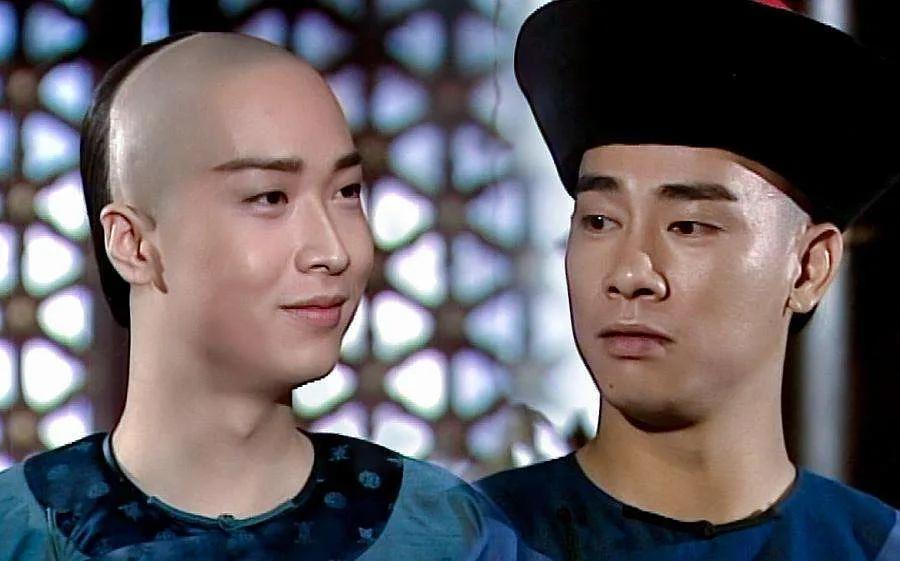
One of the reading miscellaneous talks of "Deer Ding"
During the Kangxi Dynasty, Mr. Jin Yong's Cha family was already a prominent family of "seven scholars and five hanlins of uncles and nephews". The Kangxi Emperor was very fond of Cha Shenxing's poems and inscribed him with a three-character plaque of "Jingyetang". Even after experiencing the literal prison of the Yongzheng Dynasty, a wisp of books from the Cha family has not dispersed, continuing 200 years later, when Cha Liangyong was born in 1924. Chinese this family-style cultural inheritance has a long history, and the inextricable veins inside are very moving to stretch the time and line of sight. In 2018, Jin Yong died, and the Spirit Hall hung a horizontal plaque of "A Glimpse of All Beings" conceived by Cai Lan's handwriting and Ni Kuang. This is highly rated and recognized as apt. From the temple to the rivers and lakes, wherever there is Chinese, there are Jin Yong novels.
The first version of "Deer Ding" that I read was the Baowentang edition published in 1990, and I believe it is also the most memorable version of many veteran Jin Yong fans in the mainland. I was still young in junior high school, but I had been fascinated by Jin Yong's novels for many years. After mr. Jin Yong's death in 2018, I have successively read many of Mr. Jin Yong's friends and colleagues who remember him, especially Mr. Dong Qiao, who was the editor-in-chief of Ming Pao and Ming Pao Monthly, has worked with Mr. Jin Yong for more than ten years, and his first-hand exposure is far closer to Mr. Jin Yong himself than the description in the complicated version of "Jin Yong Biography". He bluntly said that Mr. Jin Yong's personality is somewhat Mu Ne usually does not talk too much, so this time in the process of re-reading "Deer Ding", he has been thinking: Jin Yong wrote Guo Jing, Yang Guo, Zhang Wuji, Xiao Feng and even wrote Ling Hu Chong may be "reasonable", but how can he write Wei Xiaobao? Mr. Dong Qiao said in his new work "Wenlin Retrospective Record" that Mr. Jin Yong was "tireless in studying and curious", and these eight-character comments seem ordinary but may be one of the reasons.
The story of "Deer Ding" is led by the "Ming History Case" and the adventures of Chai Huang and Wu Liuqi, the "Haineiqi Man". Similar to the "Ming Shi Case", the "Wei Min Suo" case experienced by Mr. Jin Yong's Ancestors of the Cha clan during the Yongzheng Period is also widely implicated. He described this unjust case in detail in the commentary after the first time, and used the fifty times of the "Deer Ding" to select Zha Shenxing's "Jingyetang Poetry Collection" to do a "deed of the descendants to publicize the ancestors". The illustrations in the first volume include the "Stacked Mountains of the Yanjiang River" painted by Cha Shibiao in the year of the Kangxi Yimi, the year the Treaty of Nebuchu was signed. As a lover of calligraphy and painting, I was extremely unfamiliar with Cha Shibiao, so I found another representative work of his, "Qingshan Buju Tu", which was titled "Imitation of Ni Yunlin Painting Method". Judging from the composition of Ni Zhan's heirloom works, this "Qingshan Buju Tu" should be copied from "Rong Knee Zhai Tu". As Mr. Jin Yong himself said, Zha Shenxing is not a first-class poet, and the paintings of Cha Shibiao are also little known under the fame of the four monks in the early Qing Dynasty. However, when readers like me are guided by Mr. Jin Yong to appreciate the paintings of Cha Shibiao that they did not know before, from this perspective, Mr. Jin Yong's "careful thinking" of promoting his ancestors through "Deer Ding" has obviously been successfully achieved. Of course, from the perspective of later generations, the achievements of Zha Liangyong (Jin Yong) far surpassed those of his ancestors.
"Deer Ding" began to be serialized in Ming Pao on October 24, 1969, with a total of 1020 issues. Mr. Jin Yong writes about a thousand words a day, and Yun Jun also has an illustration every day. The illustration of "Kangxi leading a group of small eunuchs to join forces to capture Aobai" included in the fifth revision is my favorite in the whole "Deer Ding". This work was carefully copied when I was a teenager. I found a collection of "Deer Ding" Ming Pao serial edition for comparison, January 13 to 15, 1970, (83, 84, 85) three consecutive issues of three consecutive illustrations depicting the early stage of "Deer Ding" this big drama. Ten years later, Jin Yong invited Yunjun to redraw the illustrations of "Deer DingJi", and in August 1981, 32 volumes of "Jin Yong's Works" were published by "Minghe Society". After an interval of 10 years, Yun Jun's painting achievements at this time have been like fire pure blue and Mr. Jin Yong's words together, and finally become a classic.
"Deer Ding" has many versions of movies and dramas, and I like Wei Xiaobao, played by Stephen Chow the most. Wei Xiaobao, played by Chen Xiaochun, also has a high evaluation, but he is tall and does not quite match the description of the original book. "Deer Ding Ji" is the most complex structure and the most bizarre plot in Jin Yong's novels, and it is also the most difficult to fully express in the language of the lens in all Jin Yong novels. This year's remake of Zhang Yishan's version of "Deer Ding" is a "collection of achievements" for many years. Regardless of whether the director has read the original work in its entirety, when the "Aofu" plaque appears, it can be concluded that this kind of common-sense problem cannot be saved by anyone.